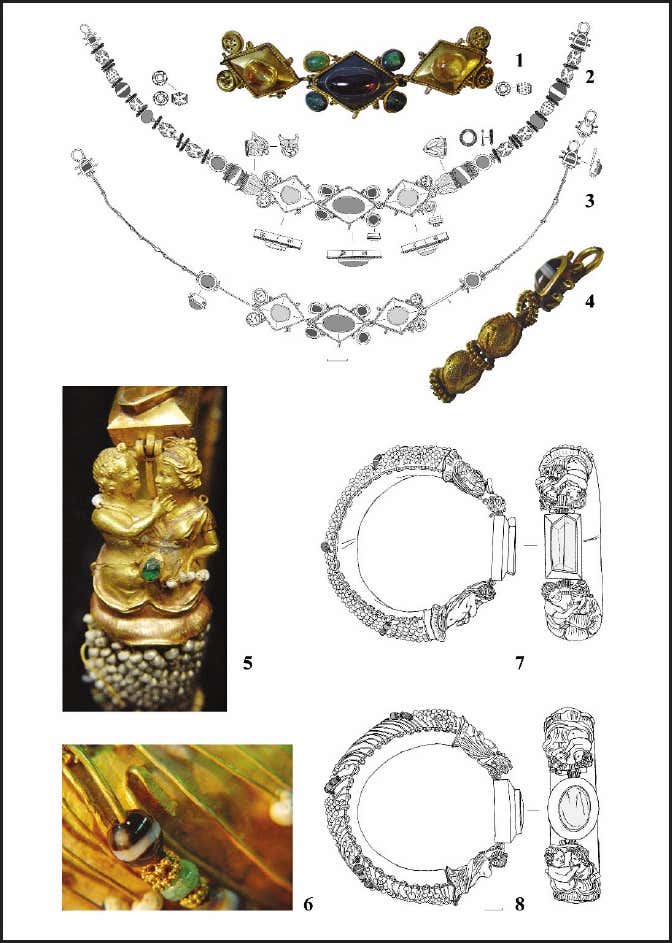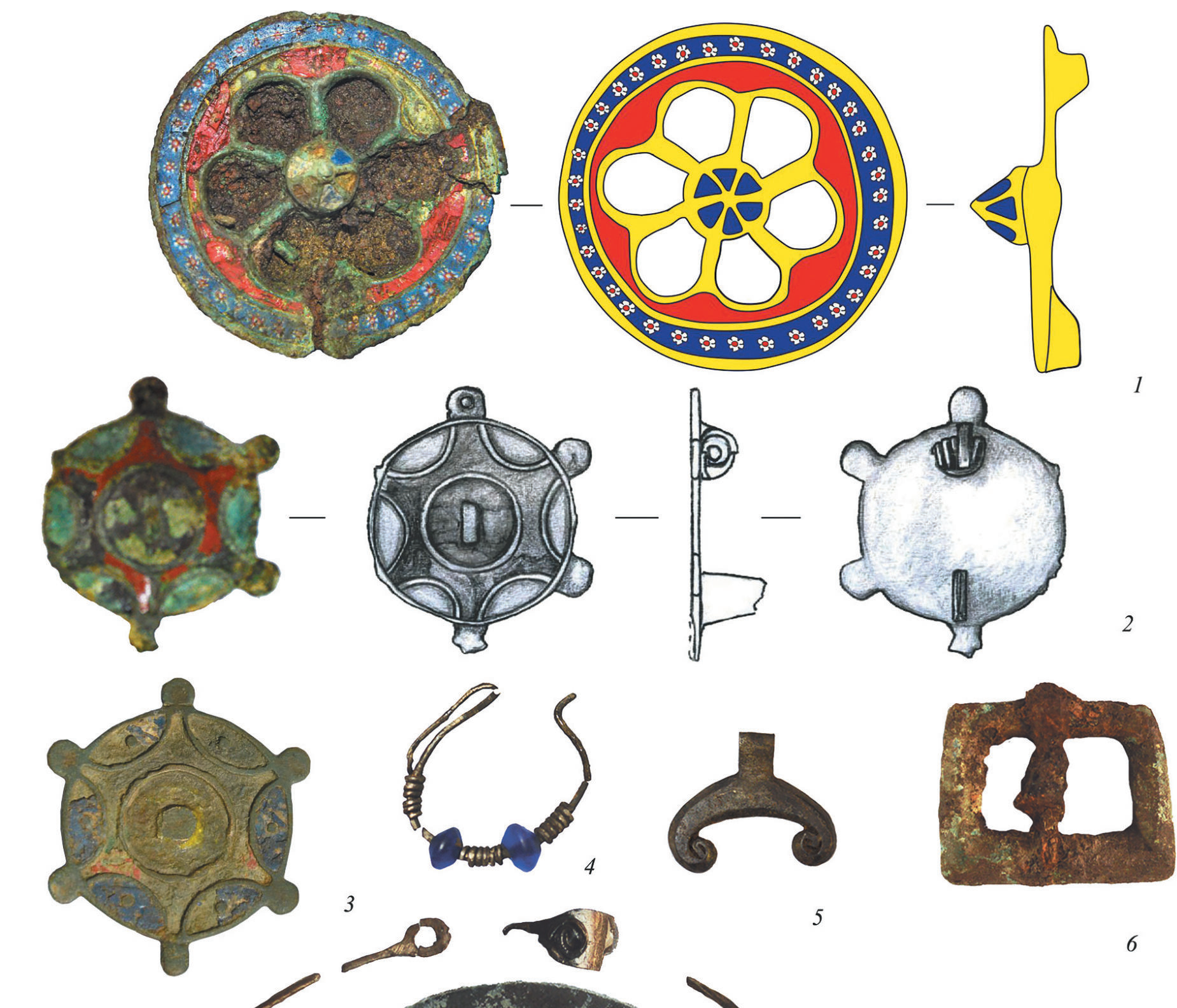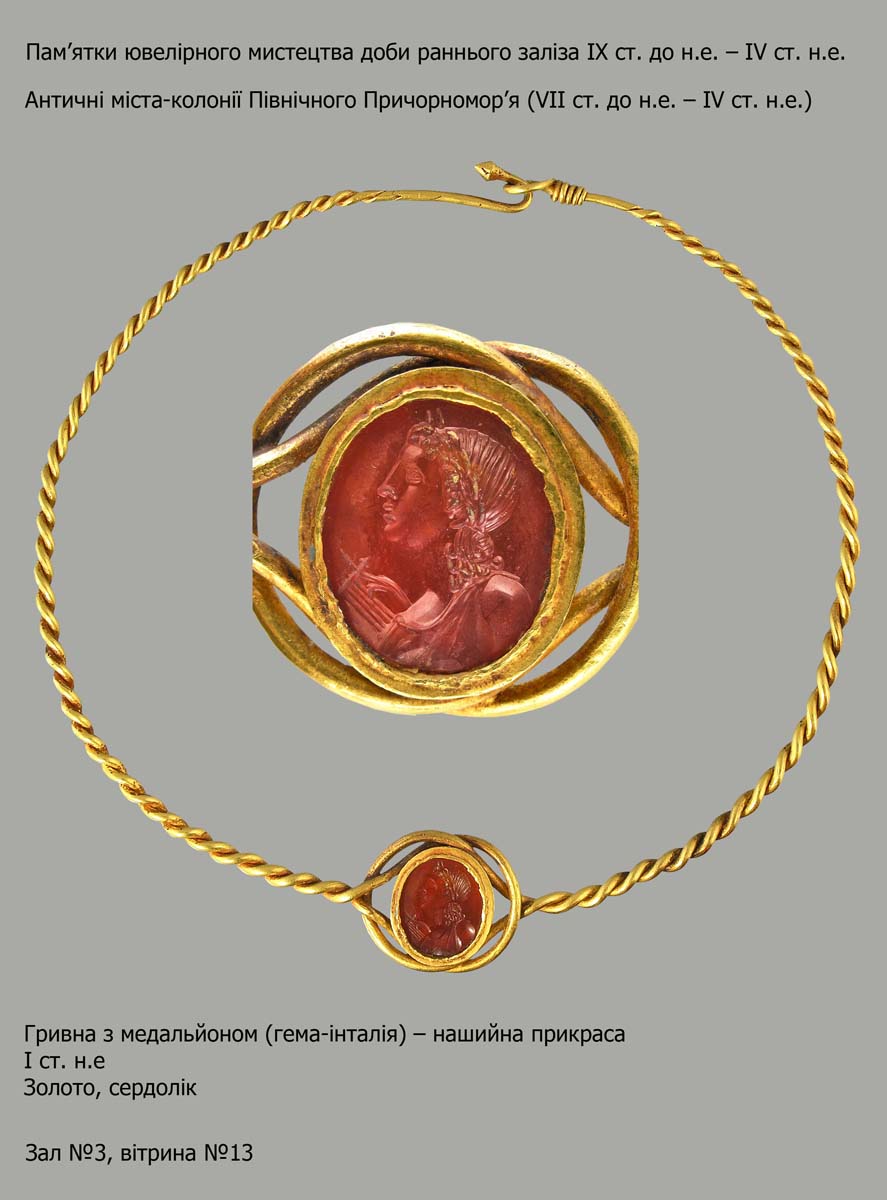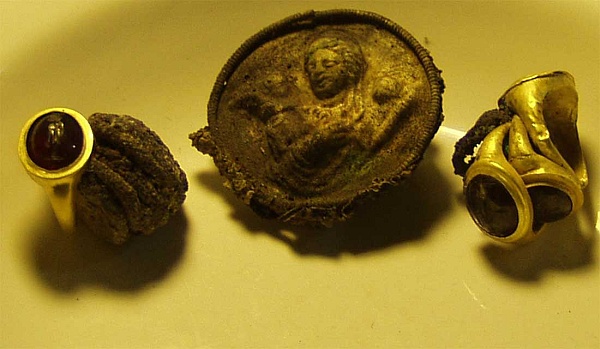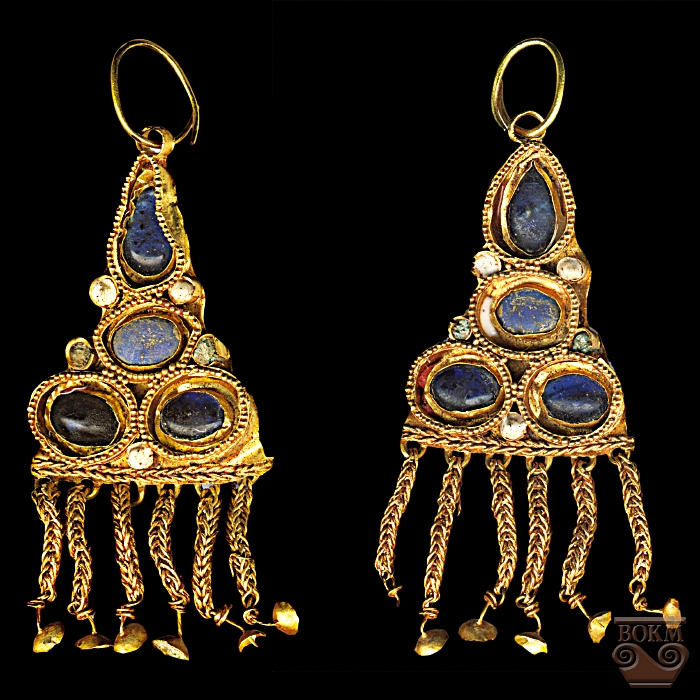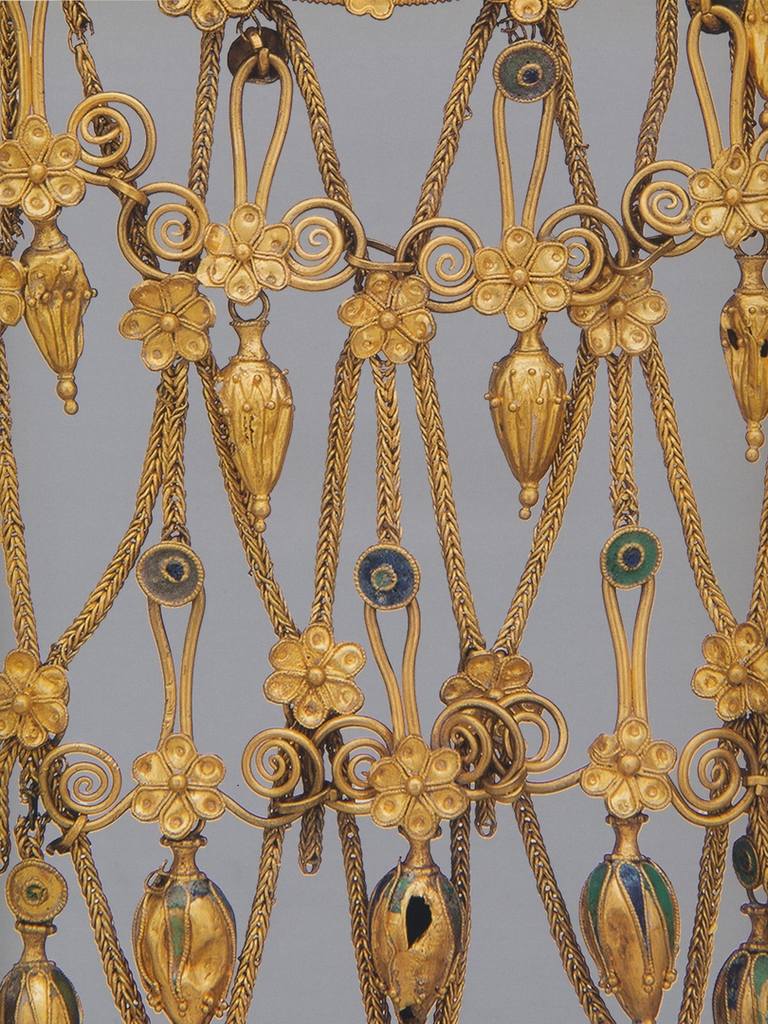Sokolova Mogila is a rich female burial of a representative of the highest Sarmatian nobility found near the village Kovalevka, Mykolaiv region, Ukraine. The burial dated to the first half or the middle of the 1st century was accompanied by a large number of precious jewelry: gold necklaces with precious stones, earrings with garnets, massive gold bracelets, gold brooches and rings, gold sewn-on plates. Among the grave goods the bronze mirror with a silver handle, a fan, silver and bronze vessels were found.
A number of items testify to the extensive ties of the Northern Black Sea region with Egypt, the Caucasus, Iran, India and the ancient centers of Europe.

A woman, 45-50 years old, was dressed in trousers, a purple silk dress and a blue cloak. Her dress was embroidered with golden thread and decorated with hundreds of golden plates of different shapes, parts of them incrusted with enamel. Samples of silk fabrics with gold embroidery have been preserved. A large number of amulets indicates the priestly status of a woman.
From The Treasury of Ukraine FB website:
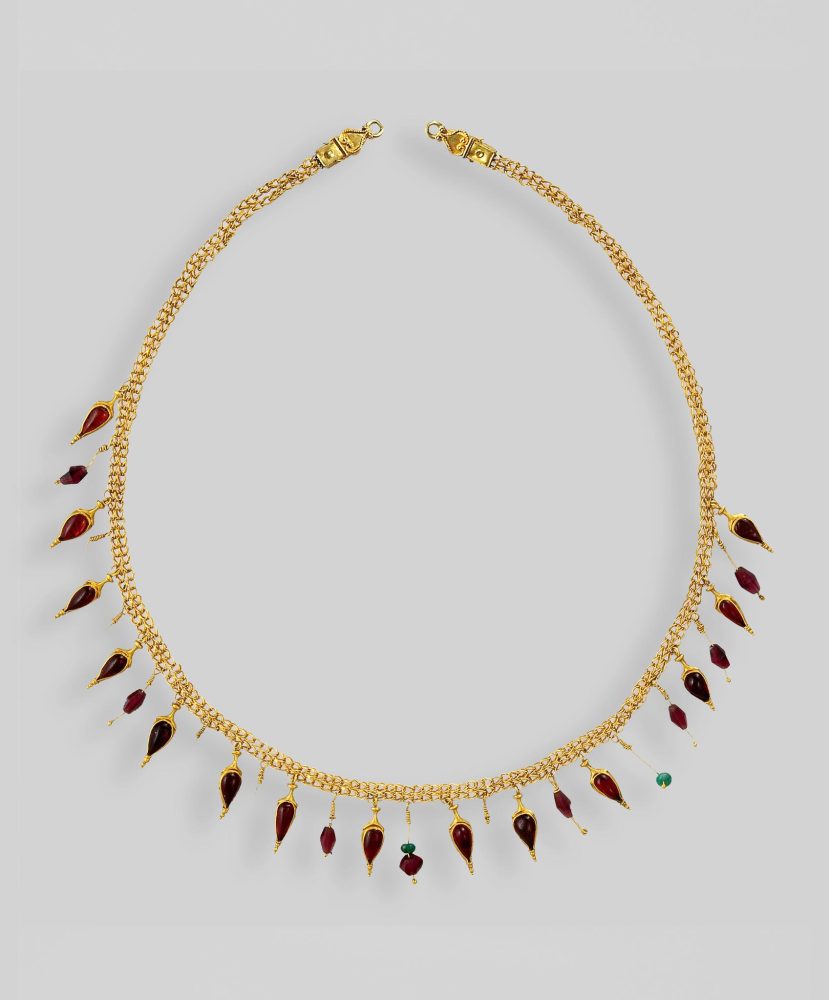
“Today, the world of jewelry in our museum presents this delicate gold necklace. It consists of two thin chains soldered together through one ring, 14 pendants with garnet inserts, alternating with 14 pendants made of beads (not all have survived). The beads were made of dark lilac quartz (in two cases they were replaced with beads of blue glass), which harmoniously combines with the bright red of the garnet droplets. They fly everywhere like fiery arrows, igniting the thirst of passions. Such decorations were popular in Roman times. They lived among the wealthy inhabitants of Olbia, Chersonesus and Panticapae, and from them, thanks to merchants, they got to the Sarmatians. The necklace was found by archaeologists during the study of the tomb of a noble Sarmatian woman of the 1st-2nd centuries AD. in the mound of Sokolov Mohyla near the village of Kovalivka, Mykolaiv region in 1974. The woman was dressed in silk clothes decorated with gold embroidery. She was decorated with necklaces, earrings, and rings. Probably, during her lifetime she became famous as a priestess of the powerful goddess of fertility, marriage and love.”
https://www.facebook.com/treasuryua/photos/a.445966688771951/5911750825526816/

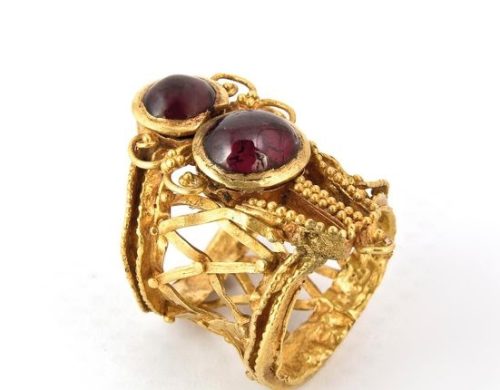
Gold ring with garnets, and the Atef crown motif.



Bracelet with garnets and glass inserts, 1st century, from the Sokolova Mogila kurgan near the village of Kovalevka, Mykolaiv region, Ukraine.
- Satana and Others: Priestesses, Witches and Queens of the Steppe-Region, Valéria Kulcsár, Eszter Istvánovits [academia.edu]
- A. Symonenko, Chinese and East Asian Elements in Sarmatian Culture of the North Pontic Region [academia.edu]
- А.К. Ёлкина, О тканях и золотном шитье из Соколовой Могилы in Г.Т. Ковпаненко Сарматское погребение I в. н.э. на Южном Буге. // Киев: «Наукова думка». 1986.

